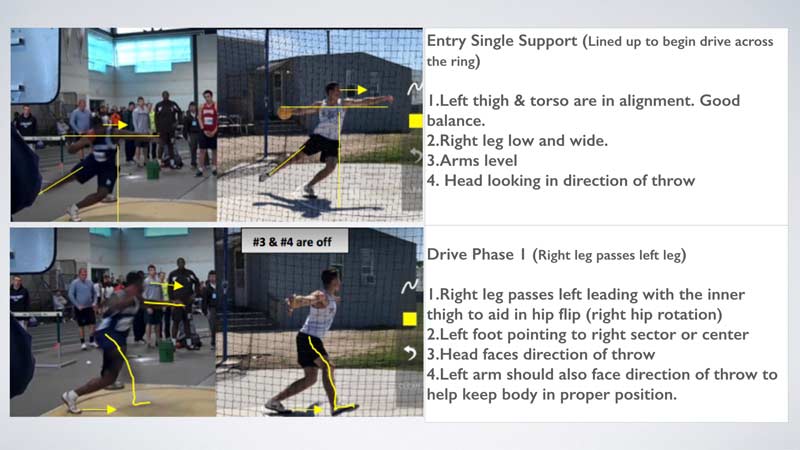Examine This Report about 4throws
Wiki Article
4throws for Dummies
Table of ContentsThe Definitive Guide for 4throwsEverything about 4throwsWhat Does 4throws Mean?The Best Guide To 4throwsExamine This Report on 4throws
If not, the young pitchers might be most likely to have arm joint and shoulder injuries. It prevails for a trainer to "take out" a bottle when the maximum number of pitches has been thrown or if the game circumstance asks for an adjustment. If the bottle remains to play because game, he ought to be positioned at shortstop or third base where long hard tosses are required on a currently worn out arm.This combination causes too many throws and increases their danger of injury - Javelins for sale. The best location is relocating to 2nd or 1st base where the throws are shorter and less anxiety is positioned on the arm. It is also crucial to know how much time to rest young pitchers in order to permit the finest recuperation in between outings
Bottles ought to likewise ice their shoulders and arm joints for 20 minutes after throwing to promote healing. Some players may use even more than one team in a season. This warrants very close attention to correct rest. Body and arm fatigue adjustment technicians and result in injury. When playing on multiple groups, think about pitching on just one and playing a field setting on the various other (not catcher).
Anyone can toss a round "over-hand," yet not everyone can do it well. While tossing a sphere shows up easy, it is really a complex collection of motions. Shot put for sale.
The Ultimate Guide To 4throws

(https://hub.docker.com/u/4throwssale?_gl=1*1t2k2ak*_ga*MTI0MzcxOTc5NC4xNzM2NzQ3MzE0*_ga_XJWPQMJYHQ*MTczNjc0NzMxMy4xLjEuMTczNjc0NzU3My40MC4wLjA.)The shoulder joint is included three bones, scapulae, clavicle and humerus. The head of the humerus hinges on the Glenoid fossa of the scapula where it verbalizes when the muscular tissues of the shoulder contract to move the arm. The head is held "against" the glenoid surface using the 4 Rotator Cuff (RTC) muscles, which act in unison and develop a force couple when the arm is relocated.
The further the shoulder can be externally turned while it is abducted, the higher the round can be tossed with force and rate, offering all other body parts and movements are in synch. If any type of facet of these technicians is "off," an injury can take place to the shoulder or elbow joint that can cause the inability to throw a sphere.
It is the beginning of the throwing motion, preparing the "body parts" for the act of tossing a ball. Activity happens in the reduced extremities and upper body where the huge bulk of "power" to throw a sphere is generated.
4throws - Truths
This shoulder placement puts Get the facts the former top quadrant musculature on a "stretch" and prepares it to acquire forcefully when the arm starts to move on in the next phase of the throwing motion. The body begins to move on towards its target during this phase. The lead shoulder is directed at the target and the throwing arm remains to move into severe exterior rotation.
When the round is released, the posterior quadrant musculature starts to acquire eccentrically and violently to slow down and control the rotational rate of the Humeral head. In theory, if the eccentric control of the Humeral head did not occur the arm would proceed to turn internally and "spin" out of hand.
The Ultimate Guide To 4throws
The last stage of throwing is the follow-through. This phase slows down all body movements and stops the forward activity of the body.
Tossing a round "over-hand" includes movement in all parts of the body. If the auto mechanics are done appropriately, the ball can be thrown with excellent speed and precision. If the body is trained correctly, the act of tossing can be carried out over and over again without causing an injury to the throwing shoulder.

Paul Whatley, M.D. "When I was a child, baseball was only in the springtime and very early summer, so youngsters had lots of time to recoup from any concerns credited to recurring movements and stress and anxiety," he claims. "Currently, in order to stay on top of everybody else, there is extreme pressure for gamers to go from the springtime season directly right into summertime 'All-Star' events and showcases, followed by 'Loss Ball.' There can be very little time for the body to recoup from a sport where repetition is the crucial to developing the muscle mass memory for success.
How 4throws can Save You Time, Stress, and Money.
When this motion is done over and over at a high price of rate, it places considerable stress and anxiety on the development locations of the joint and the physiological structure of the shoulder, especially in the late cocking and follow-through stages. Due to the fact that of this, a few of the most common injuries seen in baseball players impact the shoulder and arm joint.Report this wiki page